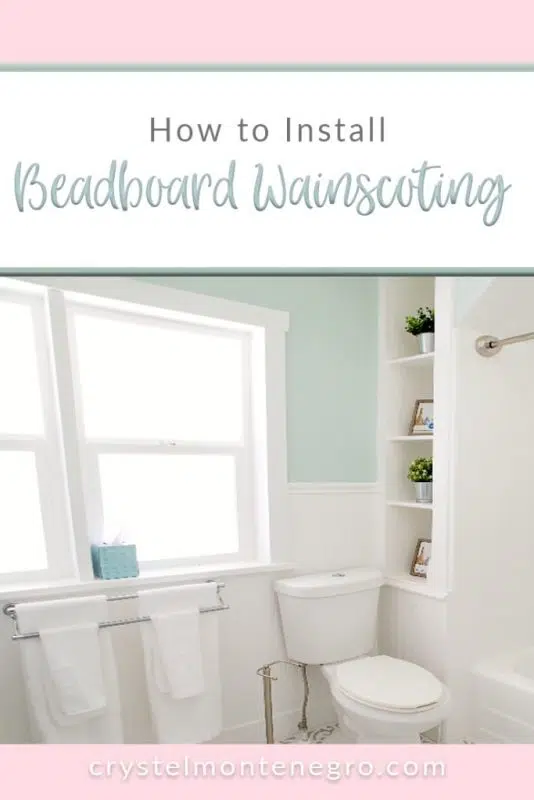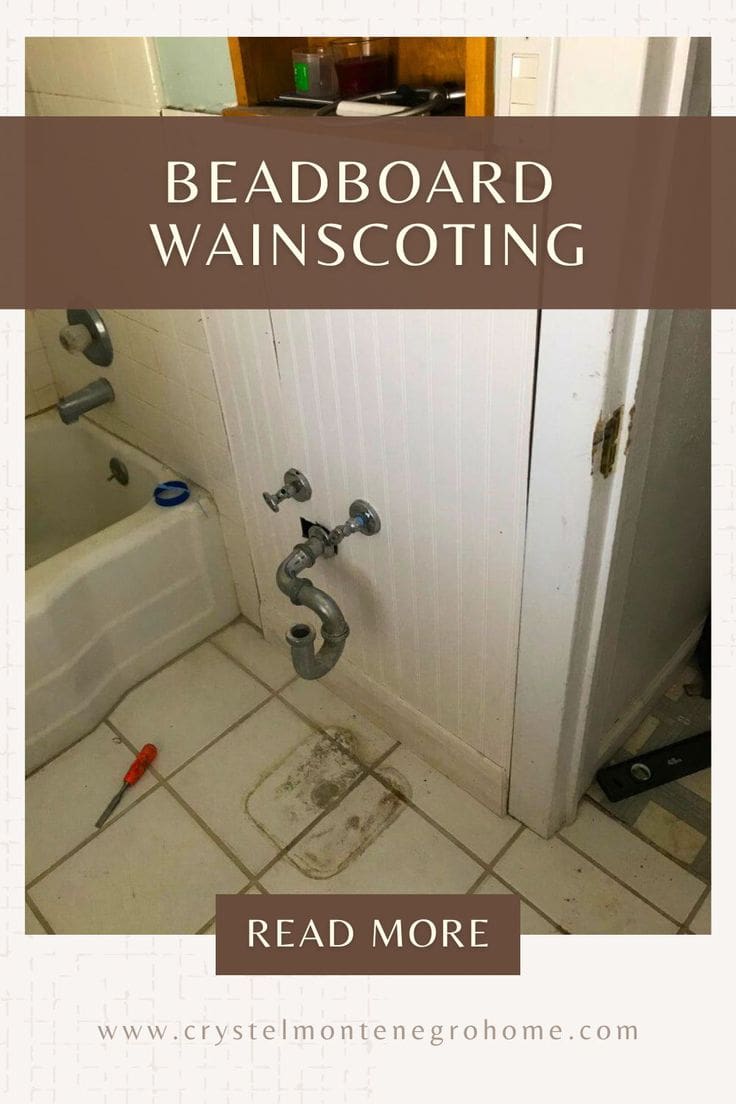To me, there are few things that speak “cottage style” like bead board in a bathroom. In my most recent post I explained how my Sister just bought a cute little cottage outside of Zion National Park to turn into a vacation rental and I offered to remodel the bathroom for her, which she graciously accepted. The house looks like this:
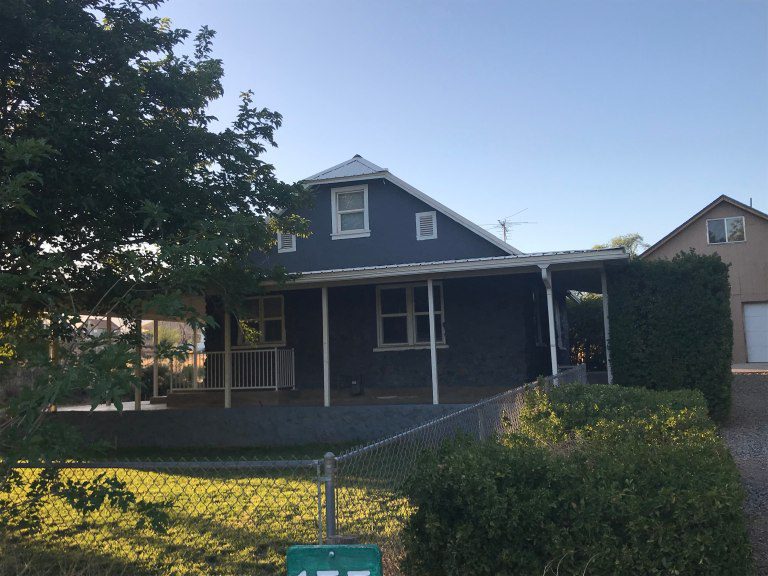
Adorable, right? So my sister actually bought this house from my brother. Who bought it from my other brother. Who bought it from my cousin. So I guess you could say it’s been in the family for a while. Originally, the top part of the house was a dated pink and the bottom part of the house under the deck is actually made of lava rock from around the area. It was originally black, and has since been painted the same blue as the portion of the house above the deck. I don’t know if you are imagining what I’m imagining, but a black and pink house just didn’t have any of the cottage-y feels. This new blue is quite the improvement.
The Demolition
Now, enter the bathroom.

A little bit gloomy, a little bit dirty. Just the kind of thing that gets me excited!

As you can see, the shower tiles extend waaaay beyond where they had any business extending. You can see in the photo below that it covered the wall behind the toilet as well.
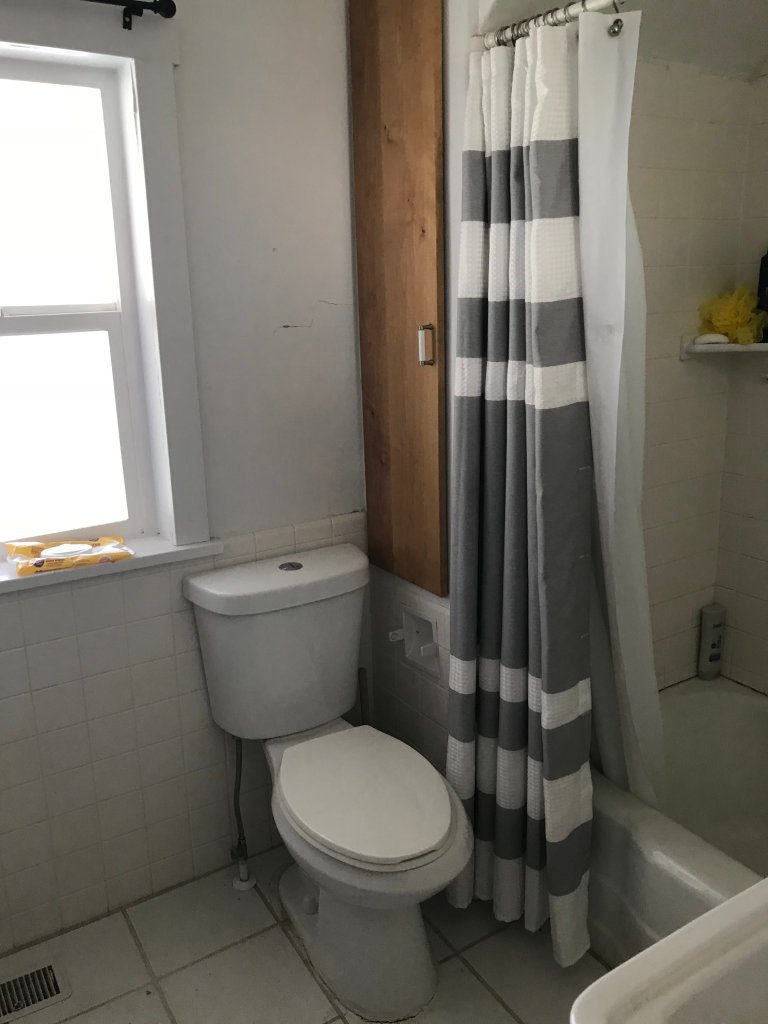
This had to be removed before I could install the beadboard, and boy was it a doozy. Because this house is over 80 years old, the outside walls are made of concrete and the inside walls are made of plaster. Whoever installed the shower tiles first glued sheetrock onto the walls and then tiled over them. Removing the glued sheetrock was no easy task. If you’re working with a house that has normal sheetrock walls, installing beadboard is a cinch! No demolition necessary, just cut it to size and tack it onto the sheetrock.
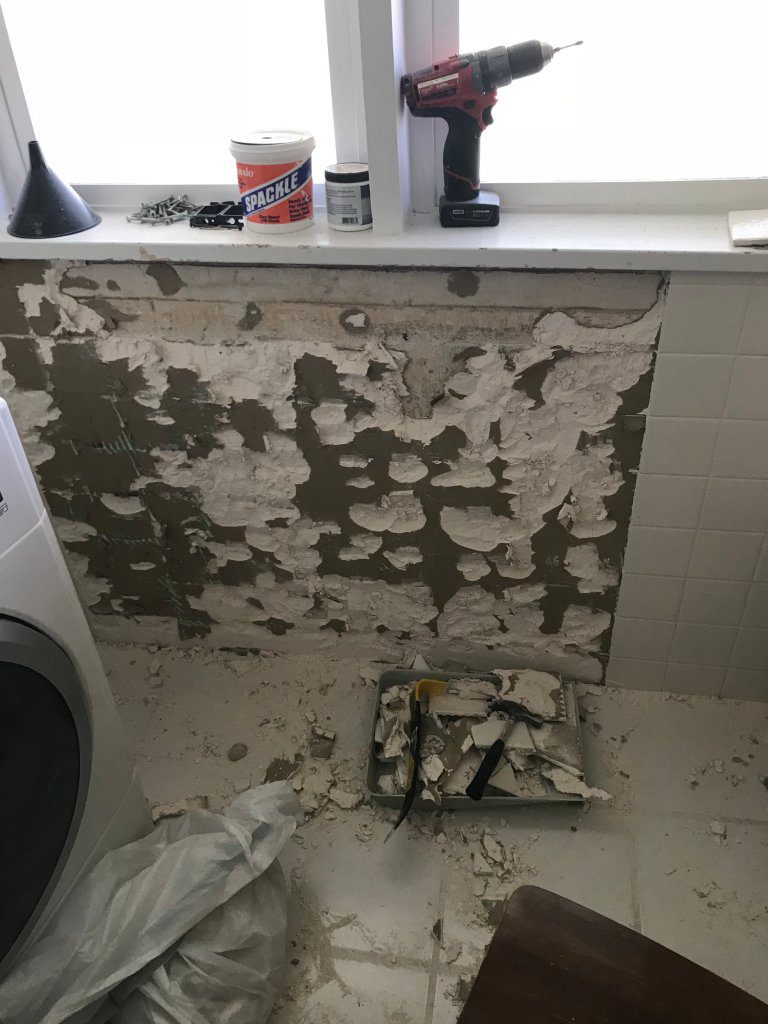
There was some serious scraping going on. I think I spent two full days scraping and chipping away at the tile and the sheetrock.
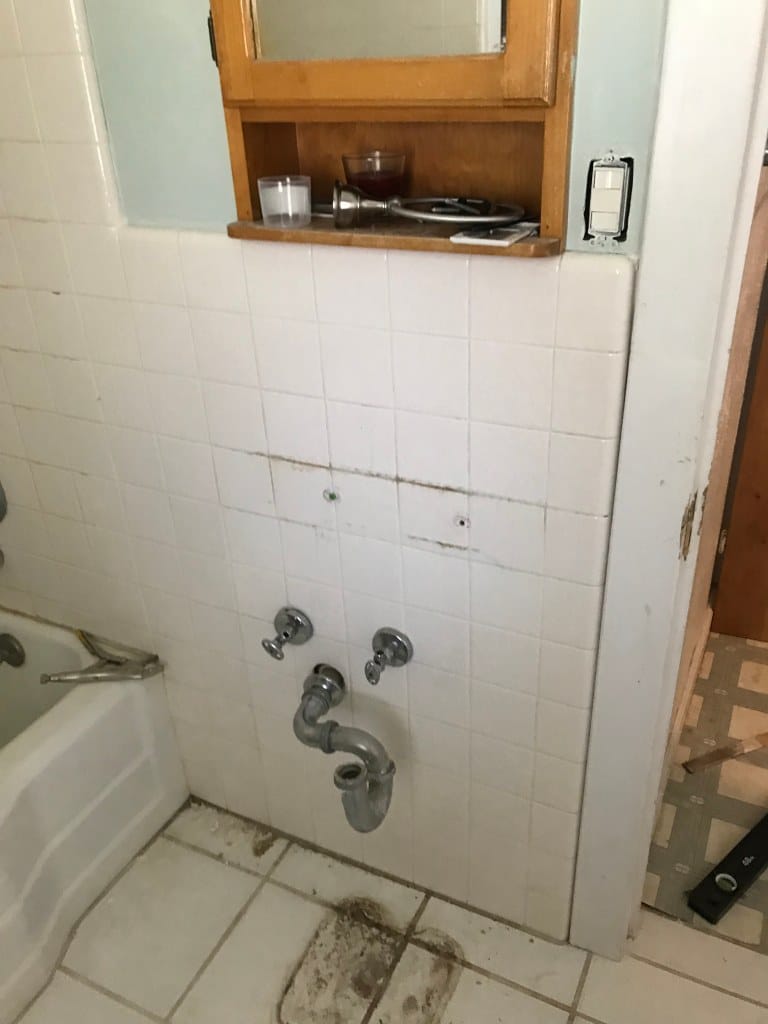
I had to remove the sink, because there was no chance I was going to be able to get the tile and sheetrock out from behind it. Removing the sink made the process much easier, although I will say that it has likely been a looooong time since the plumbing was put in because I couldn’t shut off the valve entirely. It leaked as long as the water was on to the house. So I went to the local hardware store, bought some new valves and new plumbing fixtures, and replaced the whole thing.
Installing the Beadboard
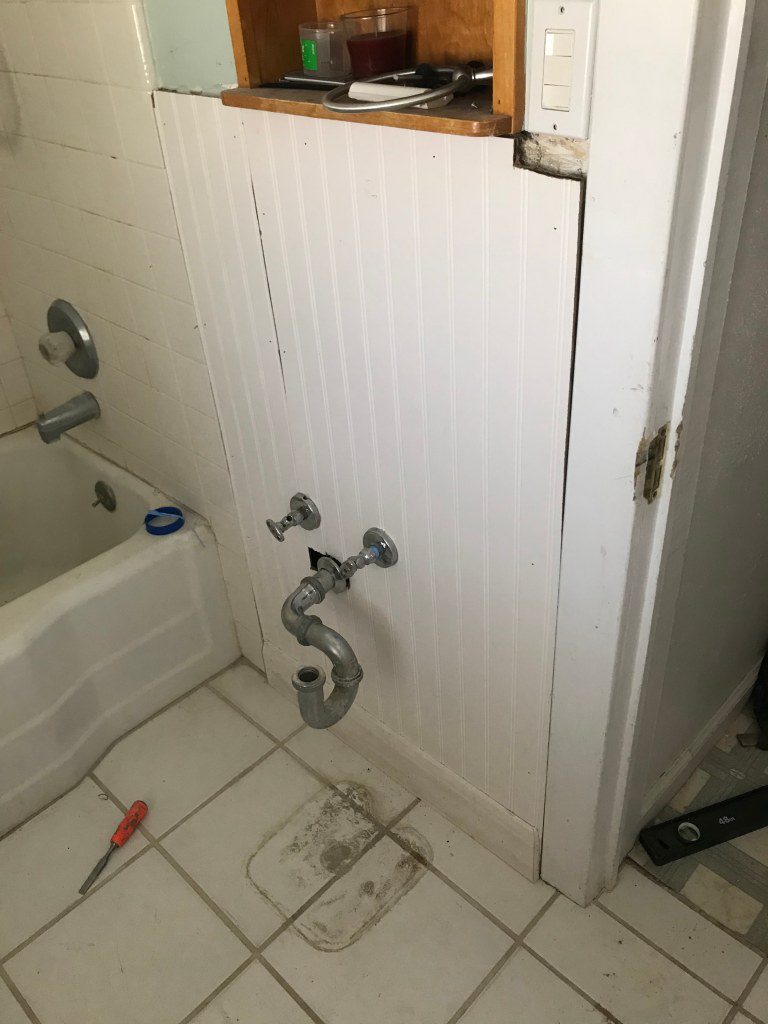
On this side of the bathroom I was dealing with a plastered inside wall, so I quickly found that removing the glued sheetrock was not possible without removing the plaster. Since I didn’t want a gaping hole with nothing to nail or glue my beadboard to, I decided to go right on ahead and chip the tile off, but leave the sheetrock there. This created a 3/4″ protrusion from the wall, but I got some trim that allowed for that kind of a gap, and jimmy-rigged the baseboard as you can see below to have a nice finished edge.

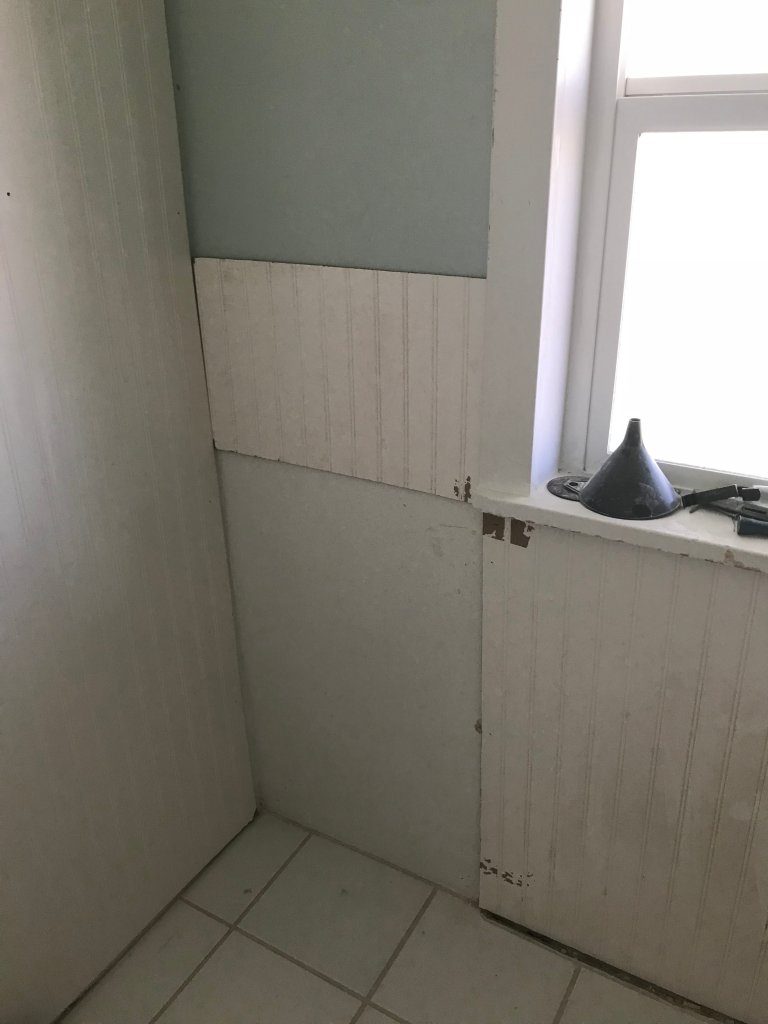
With the inside walls I was able to cut my beadboard to size, and then use my brad nailer to tack it into the plaster. The outside concrete wall made that just a little bit more difficult, however. I used some liquid nails to keep it in place where I could, and I was also able (after a few tries) to get a few brad nails into the cement. In this bathroom we used 3 full sheets of beadboard, and in an effort not to have to buy a 4th sheet, I didn’t bother putting it on parts of the wall where it would be covered up with the washer and dryer.
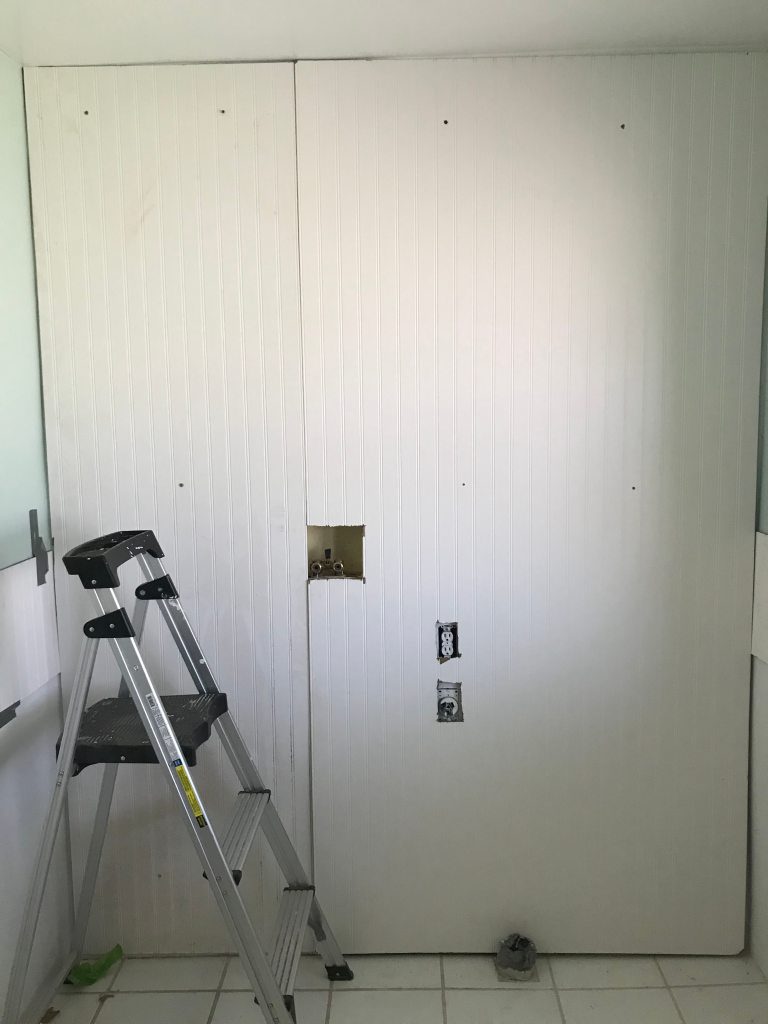
Since I was doing this all by myself, getting the larger sheets to stay up on the wall in place where I needed them was a little tricky. To do this I held it in place with one hand and drove in some screws with the other hand which are the little holes you see there. Once I got it into place I was able to nail it all around with my brad nailer, and then patched up the holes from the screws.
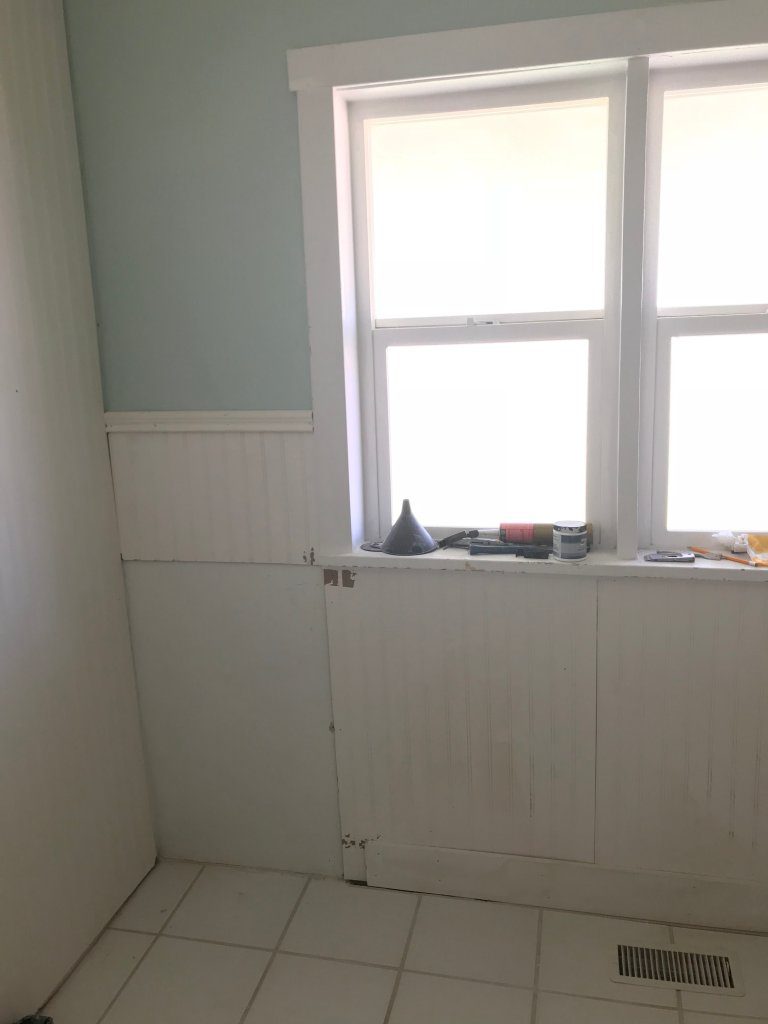
Once I had all of my beadboard cut and secured, I went over it with the trim and baseboard. All I did was cut the edges at a 45 degree angle where two trim pieces met in a corner, and then nailed it on with my brad nailer. Easy peasy! Next up, caulking the seams and nail holes, then paint! I didn’t get a pic of this process but you’ll be able to see it in the final reveal!
Thanks for tuning in!
XOXO
Crystel
